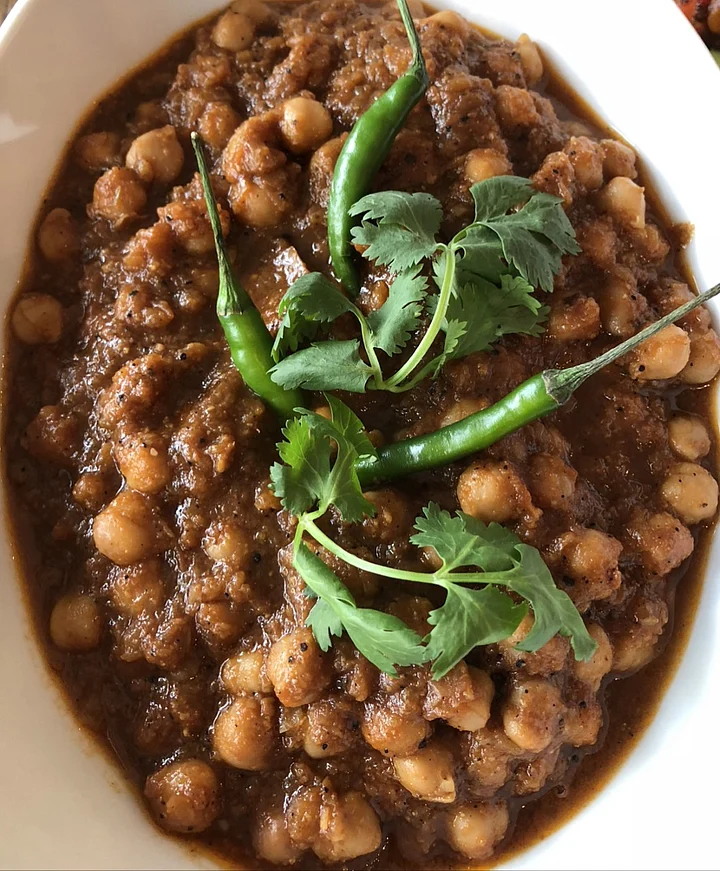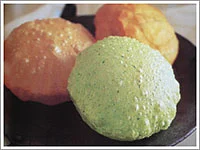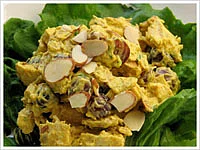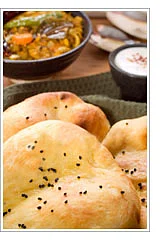The recent spate of articles on Mayukh Sen’s new book Taste Makers: Seven Immigrant Women Who Revolutionized Food in America has proved how food journalists in America have always been inquisitive about Indian cuisine.
Hidden in the wraps of America’s chequered Indian food history is the story of Julie Sahni, a renowned name among American food critics who is comparatively unknown in her land of birth.
In his book, Sen paints the portrait of Sahni as a true anomaly in this age of visibility and extreme PR ship.
For almost fifty years Julie Sahni has inspired home cooks and chefs alike, an accomplishment unmatched by any other Indian in the US. With half a dozen cookbooks under her name and an impressive line of celebrity students passing through her culinary classes for decades, Sahni has no plans of slowing down anytime soon.
Though she preferred not to reveal her future endeavours yet, she did tell us over a phone call that once the pandemic subsides, she intends to resume among other projects, her tours to India in which she accompanies food enthusiasts to experience a mosaic of regional tastes in cities like Varanasi, Mumbai, and Kochi.
America's Love for Indian Food
This is not the first time Indian food has received attention. The New York Times mentioned as early as 1921, the Taj Mahal Hindu restaurant with servers wearing turbans entering NYC’s culinary space, but it is following the 1965 Immigration Act that America’s love for Indian food blossomed with many Indians entering the country.
It was never a furious and torrid love affair but rather a gentle one that took root in secret, nourished by a line of Indian chefs and restauranters. It got here riding the waves of several trends.
To fit in, Indian cuisine initially morphed into blander hybrids to accommodate the American palate. And then came a phase of fusion food.
Chef Floyd Cardoz of Tabla in New York City set the trend as he won over the judges at Top Chef Masters with his wild mushroom upma polenta. This was followed by an uncertain phase when Indian chefs tried to roll out dishes from the different regions of India but had to hide them under contemporary favourites like truffles or familiar dishes like tikka masala.
But now, the narrative is changing. Indian cuisine is entering bolder, uncharted seas and Sahni wants to follow it there. But before learning about the latest trends, let us savour Sahni’s fascinating culinary journey.
A Young Girl Following Her Heart
Sahni arrived in the United States in 1968 as a student to study urban planning at Columbia University. Soon after, she joined the City Planning Commission and would have continued on that conventional career path had fate not interfered.
She elucidated, "I came smack in the middle of the Civil Rights Movement, Vietnam War, Women's Liberation Movement, and the age of Jazz. That influenced me deeply and changed my life forever.”
Raised in a conservative, Tamil Brahmin family, she was drawn to cooking from a tender age but was encouraged to study instead of spending time in the kitchen. She found her true self and calling in the United States because here she had the freedom to follow her heart uninterrupted.
Early Days – Shipping Ingredients From India
When she started cooking Indian food in the late 60s in New York, she had to use canned vegetables and frozen food items.
"Curry leaves, cilantro, and even green chilies, the variety used in Indian cooking were not available in the grocery, nor were utensils like karai." She had to request family members in India to ship her ingredients.
This is much before Patel Brothers opened a storefront on Chicago's Devon Avenue, which eventually turned into a multi-million dollar brand with over fifty stores across 19 US states.
That's why Sahni now makes it a point to advise her students where to shop, introducing them to authentic and vibrant spices and ingredients emphasising flavours more than bold colours.
Julie Sahni Cooking School – Teaching Students After Work
The year Madhur Jaffrey published her first cookbook, An Invitation to Indian Cooking, Sahni established the famous Julie Sahni Cooking School out of her Brooklyn Heights apartment.
Jaffrey became an ambassador of Indian cuisine and went on to write more than 30 cookbooks, whereas Sahni juggled her daytime job as a city planner with her nighttime passion of showing her students how to cook a perfect dish of Rogan Josh for years.
In her seventies now, she continues her four-hour-long cooking classes. What sets her apart is her complete devotion to her students who are personally interviewed before they are allowed to join her class.
When asked why she never thought of expanding her teaching to other cities she said, "I have been approached by several people to do a franchise of my cooking classes but for me, quality control is very important, and so is the personal touch.”
The Rise and Rise of Julie Sahni
Sahni has taught a list of important personalities ranging from legendary food writers to influential chefs over the years. The list includes the famous chefs Michael Romano and Gary Danko, and also a three Michelin star chef from France.
She has received students all the way from India and Pakistan who have travelled to her to learn recipes long forgotten in their own families. She was also secretly assigned to train staffers from the famous Gourmet Magazine so that they could accurately edit famous Indian food writers like Jaffrey.
In 1980, Sahni released her first book, a five-hundred-page volume of Classic Indian Cooking in which she demystified Indian cooking discussing in great detail the basic techniques, ingredients, and tools.
Though she has written many more books after that, one on vegetarian cooking, another on microwave recipes, to date her first book remains the bible for those who embark on cooking Indian food for the first time at home. Long ago celebrities like James Ivory and Ismail Merchant would often go back to her book when they planned an Indian meal at home.
What many don’t know about Sahni is that she is the first Indian woman chef in charge of a fine-dining restaurant not only in the US but in the entire world. In 1983, she was offered the position of a chef at the kitchen of Nirvana Penthouse, a restaurant at Central Park South owned by restauranter Shamsher Wadud, who also happens to be the nephew of Bangladesh’s first president, Sheikh Mujibur Rahman.
The following year, she was given the additional charge of Wadud’s Nirvana Club One kitchen at Times Square. She talked fondly of the glitzy days when television celebrities like Dick Clark and civil rights activists like Jesse Jackson would walk into the Club.
'New Generation Indians are Bold'
Sahni also slipped through a snippet of what it was like working in a male-dominated industry. She remembered how she had to tip over a heavy 15-gallon oil container all by herself to win over the all-male staff of Nirvana. “I was trained as a classical dancer and that gave me the stamina to be on my feet for 18 hours while running a busy kitchen.”
When asked about the future of Indian cuisine in America, she said she believes that another two-three decades might have to pass for Indian cuisine to be accepted as a classical food in America like the French or Italian.
"Indian cuisine has not had enough time to evolve in the US, unlike Italian or Chinese cuisine that had more than a hundred years to take root in the country." Culture and food are inseparably intertwined, after all.
"Much depends on the chefs of Indian origin, restauranteurs, and food writers as well. In the 70s, the Indians coming to the US in an attempt to assimilate would deliberately hide their food and culture. Many came as students so they didn’t have much foreign exchange or even access to a proper kitchen. But now that has changed. The new generation Indians are bold.”Julie Sahni
Breaking Norms: The Popularisation of Regional Delicacies
As part of the most recent trend, young chefs are breaking norms and dishing out regional delicacies from Bengal, Kerala, and Goa and doing so unapologetically. Roni Majumdar and his chef Chintan Pandya have opened Ghee Indian kitchen in Miami and Besharam in San Francisco that dish out regional Indian delicacies.
They also plan to reset the menu at their Greenwich Village restaurant, Rahi from contemporary to one inspired by authentic South Indian heritage by bringing in chef Vijay Kumar who grew up in a village in Tamil Nadu.
Sahni welcomes this new swerve and is glad that the next-generation chefs are breaking glass ceilings while showcasing regional delicacies from Bengal, Goa, Kerala, and other states.
She lamented how fusion food reduced everything to a mouthful and believes what is happening today with the diverse regional cuisines gaining popularity is what should have happened years ago. “Fusion food unwittingly defeated the journey of the Indian regional food, which is so much more than Mughlai and Dosa cooking.”
"What differentiates the US from the UK, which did not truly bother with regional food, is the advent of the vegan movement and a growing interest in Ayurveda. It has drawn Americans to try vegetarian dishes they are not familiar with. This helps the next phase of promoting regional food," she said.
Sahni thinks that the new chefs and restauranters would play a crucial role in influencing American taste.
A big proponent of regional recipes, Sahni has herself taught and popularised dishes like Pindi Chana of Rawalpindi, Meen Moilee from Kerala (fish with silk squash), and Jhinge shorshe from Bengal.
Sahni is optimistic about the future for she has witnessed the American palate evolve bit by bit, over the decades. Though her role is seminal in blazing a trail for future chefs, she thinks all Indians residing in the US can become instrumental in popularising Indian cooking.
Indian chefs and restaurants are significant but Indian homes could be equally influential, she thinks.
"Indians should open up their homes to American friends – to Whites, African-Americans, and Hispanic friends. Invite them to your cultural world and cook for them. Indian cooking is not just about recipes, it's an experience. It is therapeutic. Make the Americans a part of that and perhaps it’s going to take less than thirty years to make them embrace Indian food wholeheartedly," Sahni concluded.
(At The Quint, we question everything. Play an active role in shaping our journalism by becoming a member today.)





